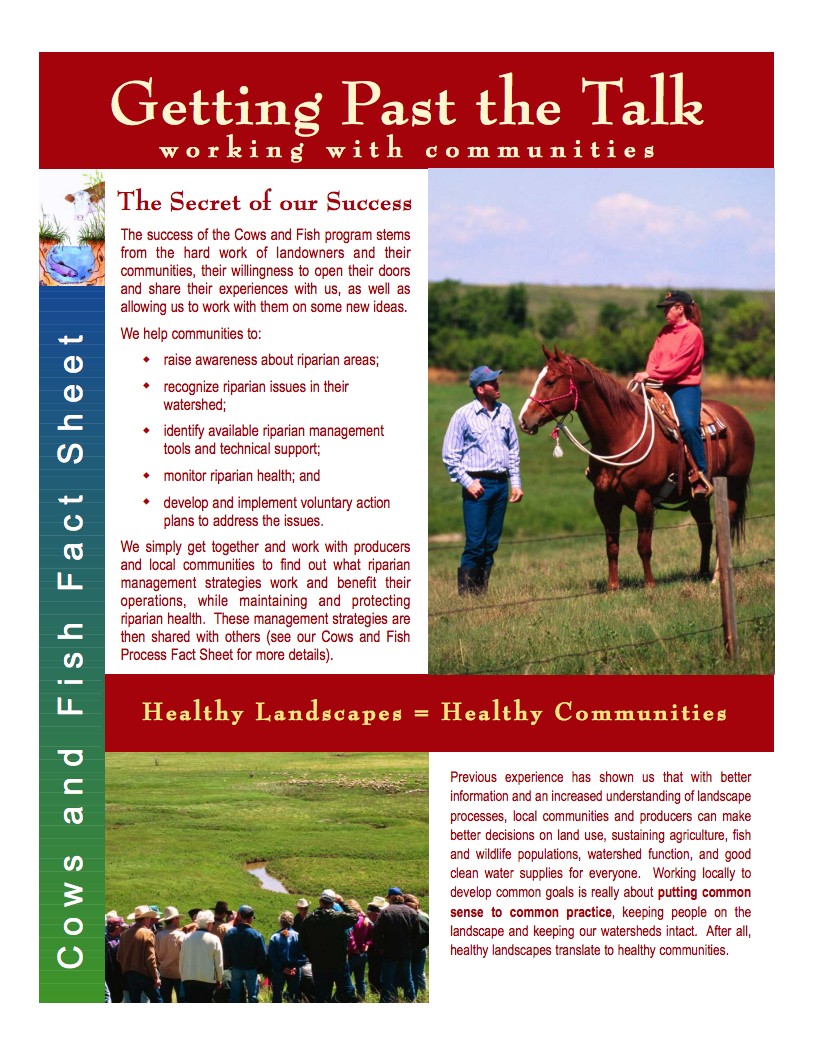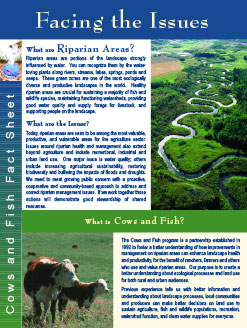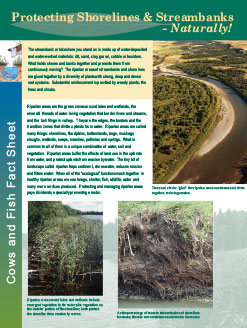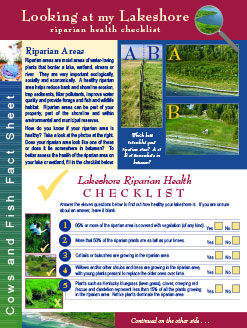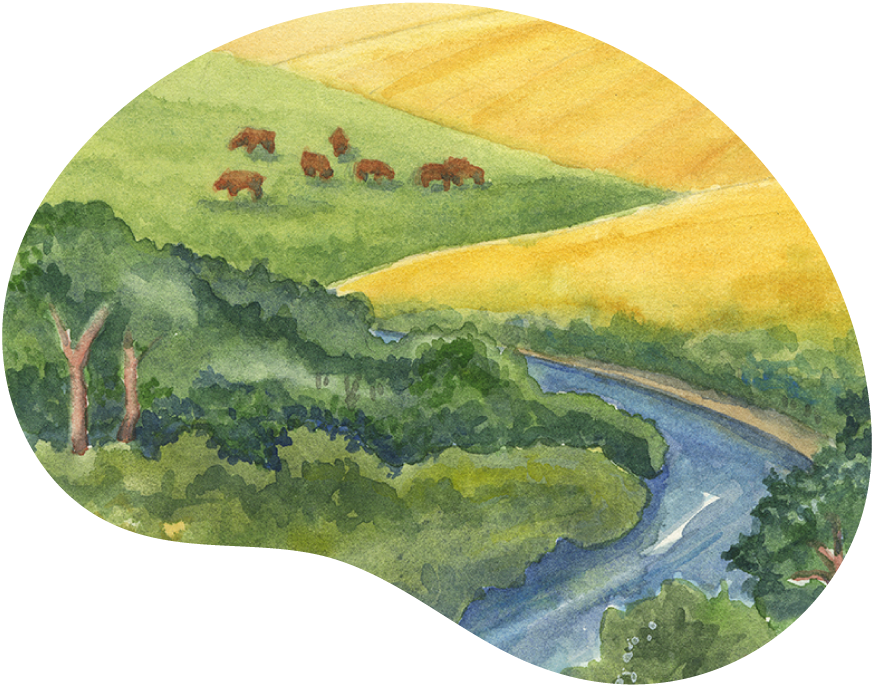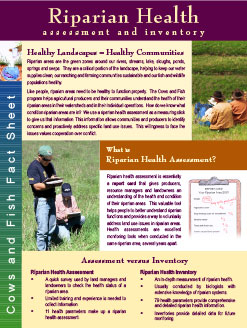
Riparian Health Assessment and Inventory
Wondering how to measure the health of your riparian area? This 4-page fact sheet will give you some ideas on why you may want to look at the health of your riparian area, and how you can use the information to make management decisions. It also describes the differences between riparian health assessment and inventory, the benefits of both, and how Cows and Fish can help.
What does riparian health look like? What makes a site healthy or less than healthy? See Riparian Areas: A User’s Guide to Health for a colourful, image based, 46-page booklet to help you tune your eye to what makes up riparian health.
To answer the question “Is this riparian area healthy?”, consider doing a Riparian Health Assessment, and request one of our landowner’s guides to riparian health, better known as Riparian Health Assessment Field Workbooks. These are pocket guides for landowners to easily determine the health of their riparian area and as an education and awareness aid for resource managers:



